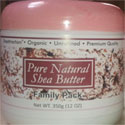In formulating your rations, there are four crucial considerations you need to keep in mind. I discuss them below in a question-answer format. I suggest you actively work through them in your decision making:
1. What feed ingredients are regularly available locally; in what condition do they come – and at what price?
Knowing the answers to the above will help you identify the most suitable ingredients to use as major components in your rations.
On Availability: For instance, if your farm is based in a location where maize is not available in adequate quantities, you’re likely to experience outages, if you formulate mainly maize based rations.
On Condition: Similarly, if your groundnut cake supplies often get exposed to moisture, you stand a risk of infecting or even poisoning your animals when it grows mouldy. In such situations, you may be better off settling on alternative protein sources with similar nutritional benefits, and/or reduce your use of groundnut cake.
On Price: Compare ingredient prices to discover which ones enable you minimise your costs, without sacrificing the desired nutrient profile in your formulated rations.
These 3 factors discussed above should guide your choice of key ingredients for formulating rations.
2. Are the ingredients you have chosen (or prefer to use) seasonal or available all year round?
Availability here differs from that discussed in 1, above: I refer instead, to the planting/production based availability, which is dictated by climatic seasons.
For instance, some ingredients are more abundant during the rainy season. So, when the dry season sets in, finding them in adequate quantities can pose a challenge.
Choose feed ingredients that are available for as much of your production period as possible.
Few feed ingredients can be stored for long periods without onset of spoilage or deterioration in quality. Therefore make your main ingredients those which can be readily found for most of the year.
In reality, your choice of main ingredients to choose will be influenced by what happens in 1, above.
3. Do you have substitutes that you can easily procure, in the event that your preferred ingredients are not available for any reason?
Let me put it this way: Have you explored the use of alternatives to your main ingredients? Do you have any that can be combined with your other routinely used ingredients to produce viable rations?
If no, you may run into problems. For instance, you could be forced to incur greater costs to source the main ingredients, if you don’t have viable alternatives at hand. And that will affect your ration’s cost.
Feeding often makes up 60% or more of total cost of rearing most livestock. You therefore want to achieve the most cost-effective production of your rations.
And that’s why exploring the use of viable substitutes that either cost the same, or are cheaper than your preferred ingredients, can be worthwhile. You will also want to do this proactively.
In other words, before the need to use substitutes arises, conduct trials to derive balanced ration using such substitutes. When your preferred ingredients become scarce, you’ll have a fall back formula ready.
4. What about quality of nutrient composition? Have you checked to confirm (via analysis) that the local ingredients you are using contain the expected profile of nutrients?
For instance, what if you get a supply of weevil infested Maize for use in compounding your rations? Using it would make your energy content calculations go out of sync with the actual content in the supplied grains. Your birds would therefore perform poorly, if fed on the resultant ration.
Some farmers fail to take this into consideration. And it ends up costing them greatly.
It’s like using adulterated medication when you’re ill. You’re unlikely to get well.
When the ingredients you use in your ration formulation are not of the right quality or nutrient composition, your ration will not deliver the expected performance in the animals fed with it.
The reason is simple. Your calculations are based on a certain expected nutrient composition in each ingredient. But that’s on paper. If the actual physical ingredients you end up using to make your animal’s feeds do not contain those expected nutrient levels, your ration will not be balanced.
If that happens, the animals’ performance will reflect it – and you will have wasted your money!
This is why results-focused farm business owners and/or feed mill operators often invest in periodic laboratory analysis of the feed ingredients they use.
Do this on a regular basis – at least weekly. Ensure sampling done is representative. Your efforts could save you a lot of money in the long run.
Final Words: Plan for the Unexpected
On a final note, keep in mind that beyond doing calculations o feed ingredients, you are also a manager.
Plan ahead for possible eventualities or the unforeseen – especially with respect to the above mentioned factors. If you don’t, your animals – and business – might suffer as a result.
PS: Click here to learn how my Feed Formulation Handbook and Excel-VB software can help you derive cost-effective rations.









Warning: count(): Parameter must be an array or an object that implements Countable in /home1/tayoswdg/public_html/sdnuggets/wp-includes/class-wp-comment-query.php on line 399